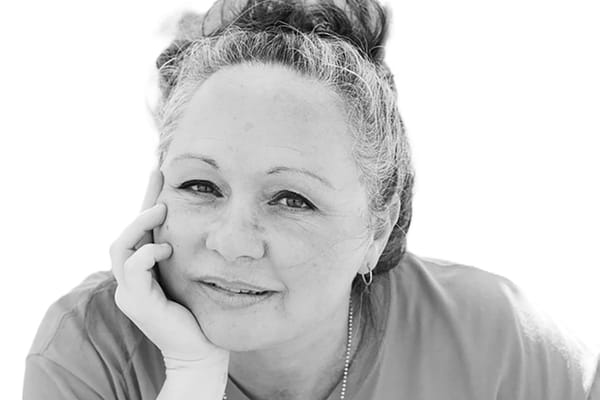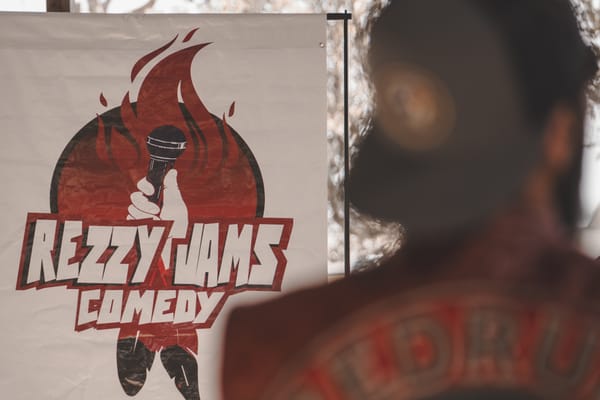Teen’s death highlights persistent challenges with Oklahoma’s MMIP cases

But Oklahoma law enforcement is learning collaboration with tribal police can make a difference.
Written By Carrie Johnson
(PAULS VALLEY, Okla.) Faith Lindsey was 17 when she went missing. At the time, she was working at a Sonic drive-in and was in a difficult and contentious relationship.
On October 28, 2019, she never showed up for her shift.
Faith was an enrolled citizen of the Chickasaw Nation and was originally from Ada, Oklahoma. At the time of her disappearance, she lived in Pauls Valley with her 24-year-old boyfriend Tanner Washington.
The relationship between the two grew violent.
This reporting was supported by the International Women’s Media Foundation’s Fund for Indigenous Journalists: Reporting on Missing and Murdered Indigenous Women, Girls, Two Spirit and Transgender People (MMIWG2T).
Washington was arrested in June 2019 for domestic violence after the two had lived together for only a month.. He’d already had multiple charges in Pontotoc County. Three months after being arrested, Faith disappeared.
The Federal Bureau of Investigation, Chickasaw Lighthorse and Oklahoma State Police all worked to find Faith. Experts say that when multiple entities work together, there’s a higher chance for cases to be solved.
Sara Billings recalled the intense search for Faith. She’s worked on and off for the Chickasaw Nation Emergency Management (CNEM) for 15 years. The workload for one person was overwhelming back in 2003 when Billings first started.
Billings was overseeing severe weather, learning plans for the Nation and setting a foundation for CNEM to become full-time. Despite the load, Billings knew she had to get the work done for the sake of her people and family, and has been doing so ever since.
At the time of Faith’s disappearance, Billings' counterpart within the Chickasaw Nation’s criminal justice system was a man named George “Ca-te” Jess. Jess is Creek and Seminole on his father’s side and Chickasaw and Mississippi Band of Choctaw Indians on his mother’s side.
Jess worked with Billings at Chickasaw Nation Emergency Management and was one of the first Chickasaw Lighthorse Officers when Lighthorse was reinstated in 2004.
As two Chickasaw employees, Billings and Jess have always had the best interest of Native American people at heart, stemming from their upbringing and following the mission of the Chickasaw Nation. Both grew up connected to their communities and stayed involved from an early age. When they were brought onto Faith’s case, those commitments were strengthened further.
“No one wants to have a cousin or aunt go missing or murdered”
There are 39 tribes in Oklahoma; the state ranks in the top ten of missing persons cases reported. For Indigenous women, murder is the third leading cause of death nationwide.
Challenges with solving cases in Oklahoma are usually due to confusion in determining responsibility, as investigations might fall on state, federal or tribal authorities. Even when responsibility is determined, issues can still arise from slow procedures or difficult relationships.
Oklahoma relationships, partnerships and other strategic efforts become increasingly important when it comes to enforcing the law – this is especially crucial for Indian Country, areas that face enhanced poverty and crime.
While collaboration fell into place with Faith’s disappearance, that has not been the case for most missing persons cases for Indigenous peoples in the past.
Dion Francis, a former Federal Bureau of Investigation (FBI) agent, remembers being shocked when he first learned about the statistics against Native American females. According to the National Indigenous Women’s Resource Center, Native women experience a murder rate 10 times higher than the national average.
“We just didn't think it was correct. I mean, it was that unbelievable to us…we just didn’t see the stuff that was right there in front of us.”
Francis, a citizen of the Caddo Nation of Oklahoma, was transferring from the Wind River Reservation in Wyoming to work in Oklahoma when he began to learn more about why Native American women were facing such violence.
When he began looking at cases, he developed the theory that most incidents happen in border towns or communities, with assaults occurring in places not controlled by Native American leadership.
Francis, Jess and Billings agree that it takes more Native officers joining law enforcement and other lines of work to solve cases and help provide solutions for the epidemic.
“There are very few people that feel as concerned about Indian Country as Native Americans,” Francis said. “That’s something that could be done, is to have more Native Americans in federal law enforcement and the FBI.”
Francis also believes education plays a crucial role, as Native Americans being in positions of leadership can help end the stigma that their communities are incapable of handling themselves.
“So many things were taken from Indian people under the excuse that they couldn’t handle their own affairs,” Francis said. “The reservation was forced on Indians, so when Indian people take advantage of it, when they figure out how to do well with something, it shouldn’t be taken away from them.”
When it comes to approaching these types of cases, Jess’ advice is to try to understand the families seeking help. When dealing with Native people, Jess says there is a strong wall that has been built by generational trauma.
“No one wants to have a cousin or aunt go missing or murdered, and you see it from time to time, a little girl gets murdered or a young teenage woman gets murdered,” Jess explained. “Everybody wants to solve that case because they see something inside that.”
Faith’s case has become an example on how having tribal law enforcement not only involved, but at the forefront of cases with support from the state and federal law enforcement in missing persons cases is essential for justice to be found when it comes to Indigenous women.
The Backstory
When Oklahoma became the 46th state in 1907, the Chickasaw people had already been living on designated “Indian Territory” for over 70 years after what is known as the “Great Removal,” when Native Americans were forced to leave their homelands. During those years, the Chickasaws had separated from the Choctaw in order to form their own government and restore their authority, an effort that all tribes - especially the Five Tribes - were striving to take.
These efforts would result in the formation of the “Lighthorse” (first called the “Lighthorsemen” by the Cherokee) and would spread across as a source of power and authority for all tribes.
After statehood, the Lighthorse were disbanded after all governmental powers were transferred to the U.S. government. The Bureau of Indian Affairs (BIA) oversaw tribal law enforcement from there on, but their capacity for the expansiveness of Oklahoma ran thin.
In 2004, Chickasaw Nation Governor Bill Anoatubby appointed Lisa John, then tribal self-governance administrator, to begin efforts towards reinstating Lighthorse.
Jess recalls how folks in his community would either be an outlaw or an oil field worker, and felt that law enforcement was an avenue for him to both “get out” and apply the upbringing he received from his community. His mother alerted him once the Chickasaw Nation began forming their police department.
“It was an honor, it was a privilege, to be picked as one of the first five to work for the newly reestablished Chickasaw Nation Lighthorse Police,” Jess said.
Jess recalls working 12-hour shifts across 13 counties in Oklahoma, encompassing 7,647 square miles of treaty territory.
It wasn’t until the early 2010s when he began hearing about the issue of missing and murdered Indigenous women. And he said there wasn’t a lot of follow up once an MMIW report was filed in Indian country. Often they were dismissed, or ruled as a runaway case.
The public image of Native officers being distrustful was one that felt especially disheartening to Jess, especially as a tribal police officer himself.
“I think a lot of it has to do with the way they were treated, not only when they were children, but that generational trauma that they had during the Trail of Tears,” said Jess.
It was important that different entities be able to work together, and for him to recognize why people had certain attitudes towards law enforcement.
“They were forced here by army agents and put in No Man's Land, so there was a lot of distrust,” Jess said.
There is a long history of distrust as many Indigenous peoples have felt that law enforcement have not always had the best interests at heart for their communities – this relationship is one that Jess feels is crucial to change to help solve severe issues in Indian Country.
Justice for Faith
After Faith’s disappearance, her family began receiving strange texts from her phone. The messages said that she was being held against her will. They also received texts from Washington that Faith was gone. A few days later, Faith’s family reported her missing.
Washington had a history of run-ins with law enforcement, so he immediately became a suspect. Washington’s ex-girlfriend reached out to the police, saying Washington had visited her and her husband to admit that he had killed Faith.
Eventually, the Federal Bureau of Investigation (FBI) was brought in. Evidence against Washington was found through cell phone information, vehicles (one which he sold shortly after Faith disappeared) that had Faith’s blood and sunglasses inside, surveillance footage and questionable texts between Washington and his mother.
Soon, drones and canine dogs had joined the searches.
More evidence came to light when the Chickasaw Nation and officers realized that Faith was the granddaughter of an elder in the community.
“It was like, ‘Oh, I know her grandpa. He's one of our dance troop leaders at the cultural center. He's one of our traditional stick ball makers,’” said Jess. “It had meaning. We have one of our elders who's missing a granddaughter. So yes, we need to do everything that we're asked to do and more.”
Search teams scoured eight different locations for Faith, with some being doubled with extra drones.
“So we fly, we're searching, we're searching, in my opinion, we were very close to finding her," Jess said.
After Faith was reported missing and the search was underway, Washington’s phone location remained fixed in place. A few days later, law enforcement noticed Washington began moving and quickly followed.
Washington was stopped in Dell City, near Oklahoma City. His vehicle was the only car in the park in the middle of the day. Officers immediately took him in for questioning, eventually charging him with first-degree murder in 2019.
The McGirt v Oklahoma ruling in 2020 upended things. The ruling stated that reservations in Oklahoma were never dissolved and therefore crimes involving Native people happening in Indian Country fall outside state jurisdiction and into the hands of tribal or federal courts. The charges were dropped, but Washington entered a guilty plea for 2nd degree murder in Indian Country in federal courts in 2022 and in 2024, and was sentenced to life in prison.
“He hasn't been out since. So for us, that was a win,” Jess said.
Crosswinds reached out to Faith’s family for comment on this story, but were unsuccessful.
While Washington is serving time for Faith’s murder, her remains have yet to be found.
“We’re going in the right direction”
Jess, Billings and Francis believe the steps towards solving issues in Indian Country are headed in the right direction, but recognize the difficulties.
For Billings, who has a young daughter herself, the search for Faith was personal. She feels the impacts of her experience and frustrations at not finding Faith both at home and work, but finds solace in remembering her ambitions.
“ I am Chickasaw, always have been Chickasaw, always will be Chickasaw,” Billings said. “I just wish they would put the effort in that when a blonde hair, blue eyed person goes missing that they put the same effort into it because that person is a mother, father, father, daughter, son.”
Billings says she learned how working alongside other agencies emphasizes the importance of not only building relationships, but keeping them, as the collaborative aspect was one of the most meaningful parts of the experience.
“I had always known that MMIW is a real and ongoing issue, but seeing it unfold in our own counties made it all the more immediate and personal,” Billings said.
Jess’ reasoning for his work comes to how he was raised and what he believes.
“ We did it because we are Chickasaw people helping citizens. We're a sovereign nation. That's what we're supposed to do. That's what we signed up for, right?” Jess said.
In 2024, Billings and Jess received Red Feather awards from the Oklahoma State Bureau of Investigation for their efforts towards the case along with Carol Williamson, J.P. Maples, Brandon Burchfield, Steve Cash, Adam Kuhlman, Dewayne Price and Steve Dunn.
The experience, they said, should be normal when it comes to missing Indigenous women and girls.
Currently, Lighthorse has more than 100 officers and an investigator that specifically targets cases of missing Chickasaw citizens.
“We need more strong Native people doing the good work,” said Jess.
This reporting was supported by the International Women’s Media Foundation’s Fund for Indigenous Journalists: Reporting on Missing and Murdered Indigenous Women, Girls, Two Spirit and Transgender People (MMIWG2T).
Carrie Johnson is an enrolled citizen of the Chickasaw Nation and a descendant of the Choctaw Nation and Pawnee Nation. She currently resides in Manhattan, New York.





